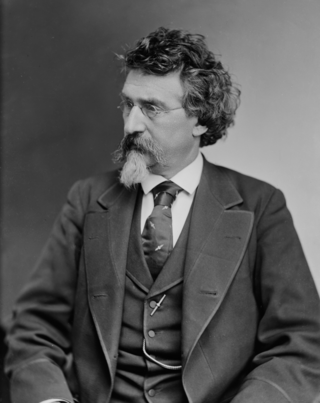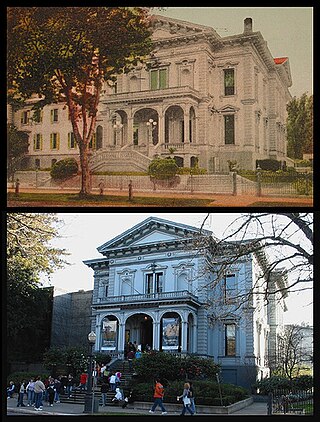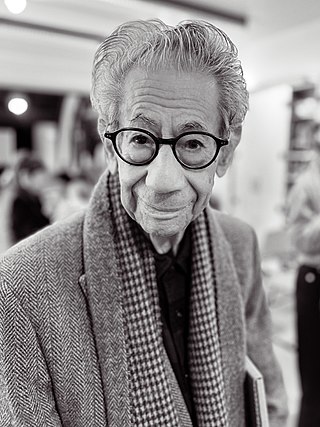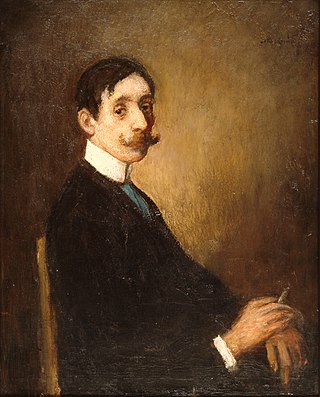
Mathew Benjamin Brady was an American photographer. Known as one of the earliest and most famous photographers in American history, he is best known for his scenes of the Civil War. He studied under inventor Samuel Morse, who pioneered the daguerreotype technique in America. Brady opened his own studio in New York City in 1844, and went on to photograph U.S. presidents John Quincy Adams, Abraham Lincoln, Millard Fillmore, Martin Van Buren, and other public figures.

Sergey Mikhaylovich Prokudin-Gorsky was a Russian chemist and photographer. He is best known for his pioneering work in colour photography and his effort to document early 20th-century Russia.

The American Civil War was the most widely covered conflict of the 19th century. The images would provide posterity with a comprehensive visual record of the war and its leading figures, and make a powerful impression on the populace. Something not generally known by the public is the fact that roughly 70% of the war's documentary photography was captured by the twin lenses of a stereo camera. The American Civil War was the first war in history whose intimate reality would be brought home to the public, not only in newspaper depictions, album cards and cartes-de-visite, but in a popular new 3D format called a "stereograph," "stereocard" or "stereoview." Millions of these cards were produced and purchased by a public eager to experience the nature of warfare in a whole new way.

William Notman was a Scottish-Canadian photographer and businessman. The Notman House in Montreal was his home from 1876 until his death in 1891, and it has since been named after him. Notman was the first photographer in Canada to achieve international recognition.

Rephotography or repeat photography is the act of photographing the same site twice, with a time lag between the two images; a diachronic, "then and now" view of a particular area. Some are casual, usually taken from the same view point but without regard to season, lens coverage or framing. Some are very precise and involve a careful study of the original image.

The McCord Stewart Museum, formerly known as the McCord Museum of Canadian History, is a public research and teaching museum. The Museum’s Archives, Documentary Art, Dress, Fashion and Textiles, Indigenous Cultures, Material Culture and Photography collections, containing 2.5 million images, objects, documents and works of art, position it as the custodian of a remarkable historical heritage. It is located directly across the street from McGill University, in the downtown core of Montreal, Quebec, Canada.

Francis Frith was an English photographer and businessman. Francis Frith & Co., the company he founded in 1860 with the initial goal of photographing every town and village in England, quickly became the largest photographic publishers in the world and eventually amassed a collection of 330,000 negatives covering over 7,000 population centres across Great Britain and Ireland.

William James Topley was a Canadian photographer based in Ottawa, Ontario. He was the best known of Ottawa’s nineteenth-century photographers and the most socially prominent one. Topley was noted for his portraiture of Canadian politicians and was a business partner of William Notman, having taken over Notman's Ottawa studio in 1872. A large number of photographs by Topley are now in the collection of Library and Archives Canada, including approximately 150,000 glass plates negatives and a set of 66 index albums covering the entire history of his Ottawa studios from 1868 until 1923.

John Hammond, was a Canadian adventurer, photographer, artist, printmaker and art educator.

Bourne & Shepherd was an Indian photographic studio and one of the oldest established photographic businesses in the world. Established in 1863, at its peak, it was the most successful commercial firm in 19th-and early 20th-century India, with agencies all over India, and outlets in London and Paris, and also ran a mail order service. A devastating fire in 1991 destroyed much of the studio's photographic archive and resulted in a severe financial loss to the firm. The long-term impact of the fire, legal difficulties with the Indian government, which owned the studio building, and the increasing dominance of digital technology, finally forced the studio's closure in June 2016. At its closure, the studio had operated continuously for 176 years.

Notman House is a gathering place for tech startups, entrepreneurs and founders situated in a historic building at 51 Sherbrooke Street West in Montreal, Quebec, near the Golden Square Mile. Completed in 1845 for Sir William Collis Meredith, the house takes its name from the celebrated photographer, William Notman, who lived there with his family from 1876 until his death in 1891. The house is the only surviving residence of its era on Sherbrooke Street, and one of Quebec's few residential examples of Greek Revival architecture. It was classified as an historical monument and added to the Répertoire du patrimoine culturel du Québec on December 8, 1979.

Lai Afong or Lai Fong was a Chinese photographer who established Afong Studio, considered to be the most successful photographic studio in the late Qing dynasty. He is widely acknowledged as the most significant Chinese photographer of the nineteenth century.

Sally Elizabeth Wood also known as Sally Eliza Wood (1857–1928) was a Canadian photographer who lived in Quebec. After training under William Notman, she worked for John A. Wheeler until she opened her own studio in 1897. She is remembered in particular for her views of the local architecture and her countryside scenes in Brome County.

John Arthur Fraser was an English artist, photography entrepreneur and teacher. He undertook various paintings for the Canadian Pacific Railway. He is known for his highly realistic landscapes of Canada and the United States, many of them watercolor paintings.

Josiah Bruce was a Canadian known for creating notable photographs of historic value in the late nineteenth and early twentieth century.

Gabor Szilasi is a Canadian artist known for the humanist vision of his social-documentary photography.

Photographs have been taken in the area now known as Canada since 1839, by both amateurs and professionals. In the 19th century, commercial photography focussed on portraiture. But professional photographers were also involved in political and anthropological projects: they were brought along on expeditions to Western Canada and were engaged to document Indigenous peoples in Canada by government agencies.

F. S. Coburn D.C.L., also known as Frederick Simpson Coburn, was a Canadian painter, illustrator and a photographer of note.

C. J. Way was an English artist who travelled to North America to discover scenery for his landscape and seascape paintings. Besides scenic views of Canada and the United States, his subjects included England, Wales, Italy and the Swiss Alps. Initially a watercolour artist, he began to work in oils in the 1870s.
William Henry Edward Napier was a Canadian artist, photographer and engineer. His medium as an artist was watercolour.



















